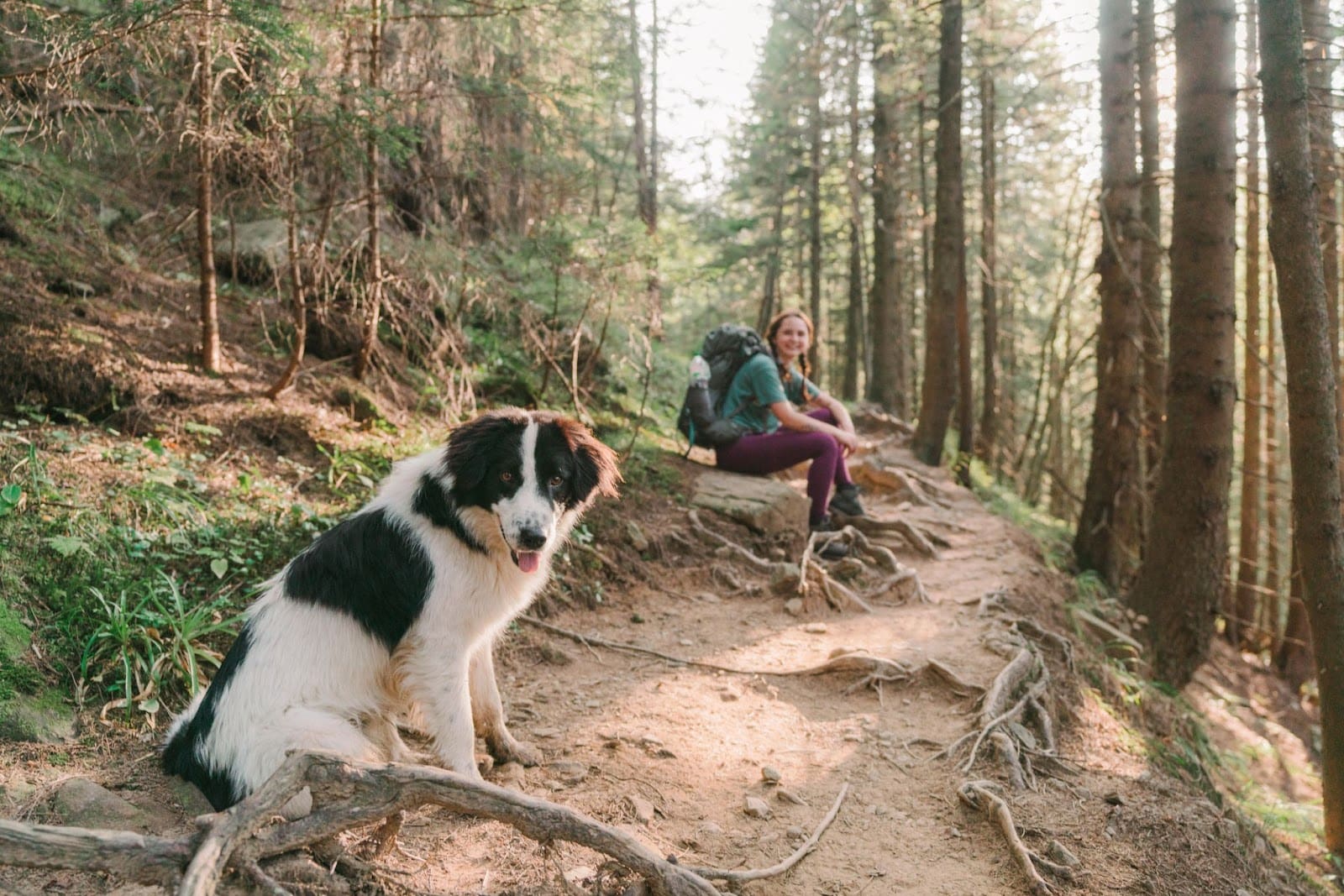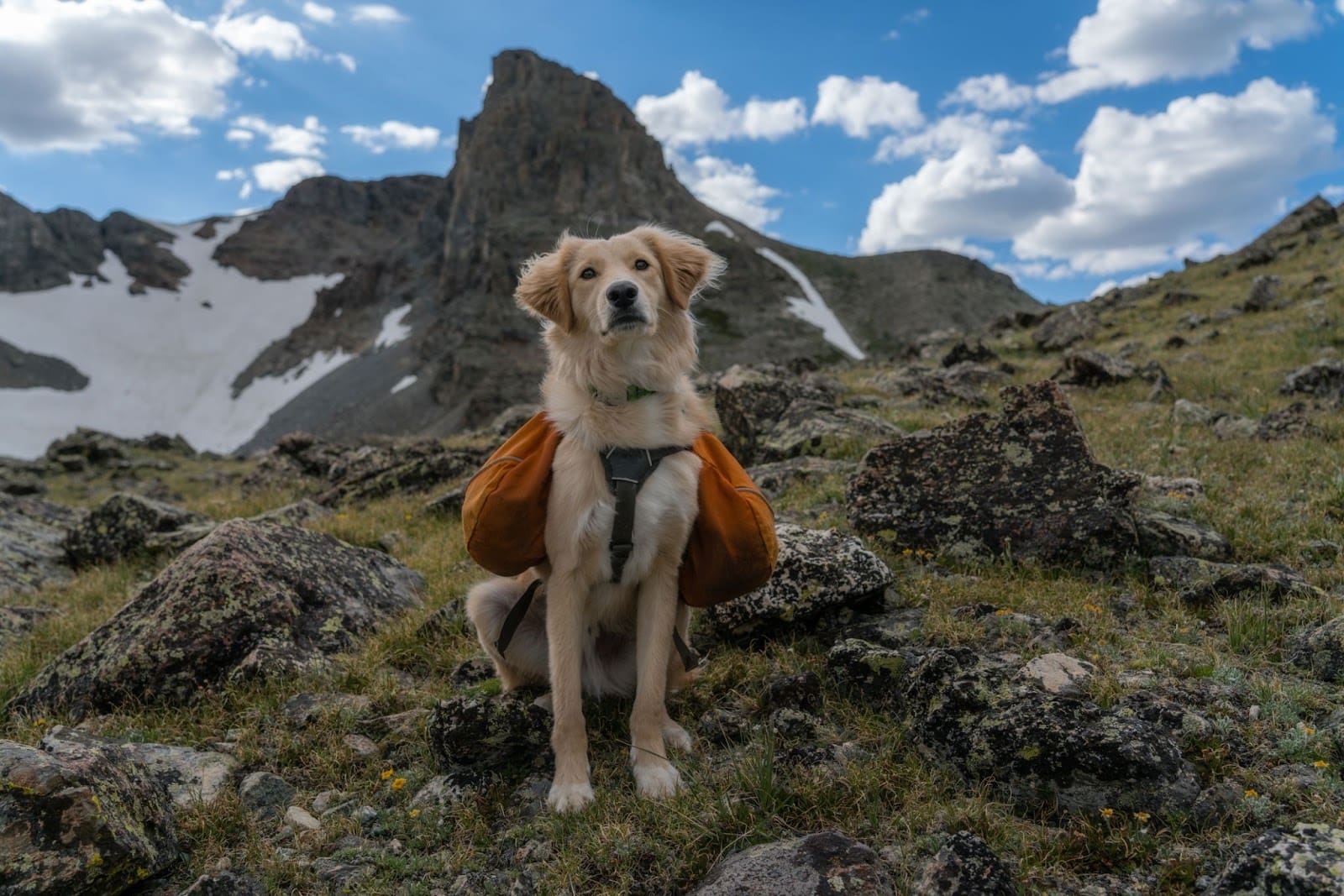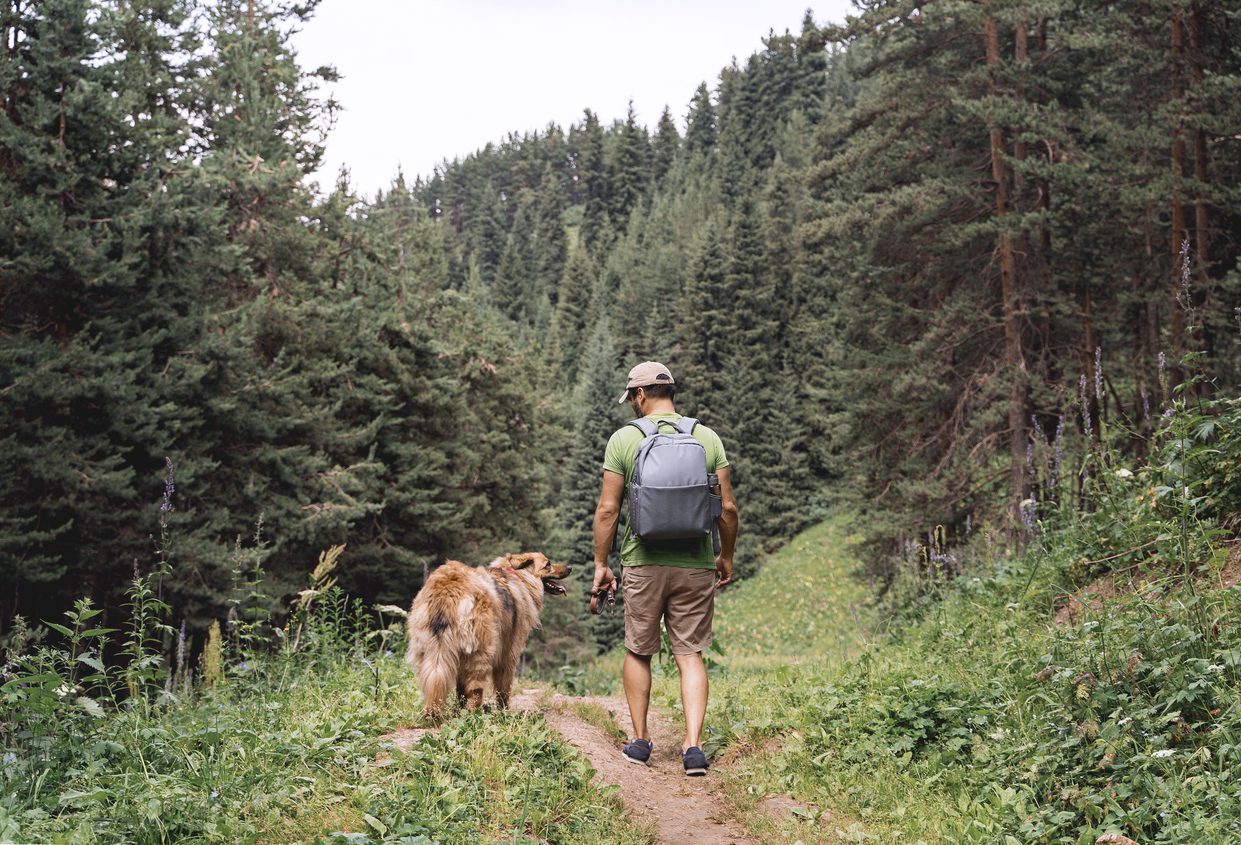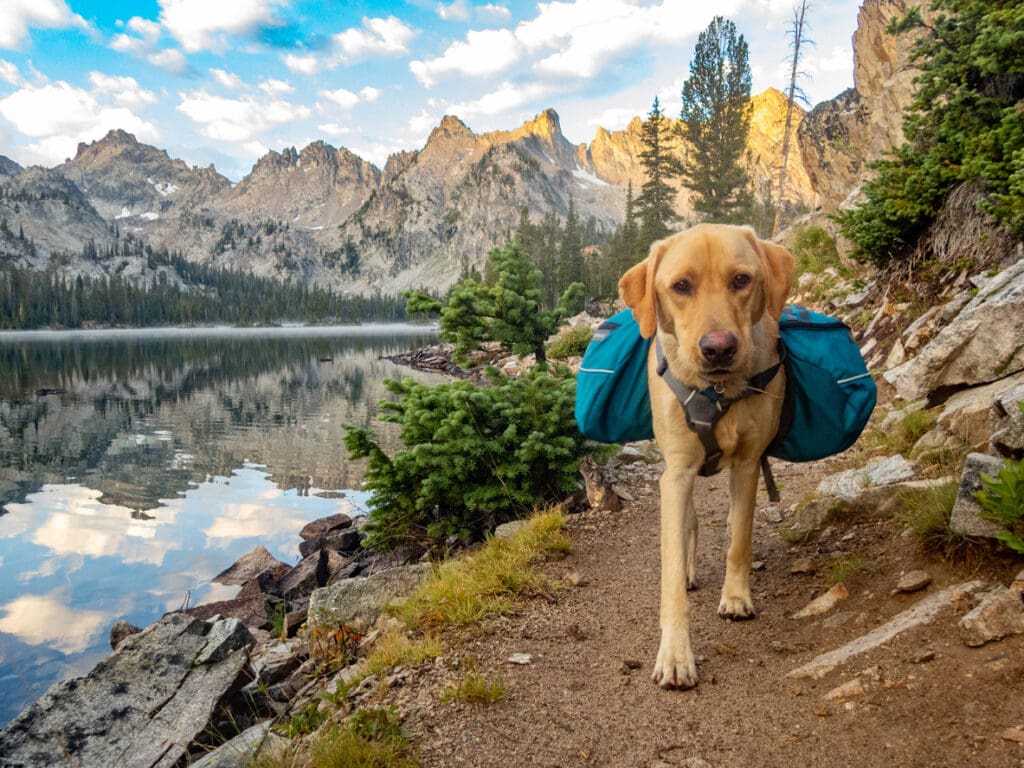Hiking with your dog is one of life’s great joys—but not every trail suits your four-legged hiking buddy. While some dogs can easily tackle challenging terrain, others may struggle with steep inclines, rough surfaces, or extreme temperatures. Before you hit the trail, it’s essential to evaluate trail difficulty for dogs and determine whether the hike is safe and enjoyable for both of you.
As a responsible dog owner, keeping your dog calm and under control on the trail is essential, as well as ensuring safety and good etiquette for everyone. The hiker must be prepared to manage their dog’s behavior and needs throughout the outdoor adventure. It's crucial to consider your dog's specific needs, including proper training, safety considerations, and the right gear for your dog's protection and comfort, such as paw protection and monitoring your dog's health and behavior, to ensure a safe and enjoyable hiking experience.
Here’s how to assess whether a trail is dog-friendly and recognize the signs that it is too hard for dogs, so you can prioritize hiking safety for dogs and avoid unnecessary risks. Most dogs can enjoy hiking if the hiker prepares adequately and considers their dog’s fitness, training, and comfort.
Trail Difficulty for Dogs: An Introduction to Trail Assessment
Before you set out on your next hiking adventure with your dog, assessing the trail is crucial for a safe and enjoyable outing for both you and your furry friend. Start by researching the trail’s terrain, length, and overall difficulty—some trails may look inviting but can hide hazards like sharp rocks, hot surfaces, or steep inclines that could be tough on your dog. Be mindful of potential wildlife encounters, as certain areas may have a higher risk of running into wild animals, which can be stressful or dangerous for dogs. Always check the weather forecast and avoid hiking during extreme temperatures, as heat exhaustion can set in quickly for dogs, especially on hot days. By carefully evaluating the trail and its conditions, you can make informed decisions that keep your dog safe and ensure a fun hiking experience for both of you.
1. Research the Trail Ahead of Time
Do your homework before you lace up your boots and leash up your pup. Look for online trail descriptions and reviews that mention:
- Dog-friendly access: Many national parks and state parks have strict regulations about hiking with dogs. Choose parks that allow dogs and provide marked trails with moderate terrain. Always keep your dog on a leash, as many dogs may be on popular trails, and following leash regulations helps ensure everyone’s safety and enjoyment.
- Trail length and elevation: A longer hike with sharp inclines may be too taxing, especially for older dogs, smaller dog breeds, or dogs with health issues.
- Surface type: Rough terrain, sharp rocks, and uneven trails can be hard on your dog’s paws. Trails with soft dirt or grass are better suited for sensitive feet.
Taking your dog on regular long walks before attempting more challenging hikes helps build its fitness and stamina, making it better prepared for the trail's physical demands.
Not everyone follows leash laws or trail rules, so it’s essential to keep your dog leashed and avoid letting them off leash, even if you see others allowing their dogs to roam freely.
If you’re wondering, “Is this trail safe for my dog?” It likely depends on your dog’s body weight, age, health, and experience on the trail. For safety and proper trail etiquette, always keep your dog leashed, as this helps prevent injuries and wildlife encounters and ensures a positive experience for all hikers and their pets.
2. Know Your Dog’s Physical Limits
Not all dogs are built for the same physical demands. Trail difficulty for dogs depends on:
- Breed: Athletic breeds like Border Collies or Huskies may love long hikes, while brachycephalic breeds (like Bulldogs) struggle in hot weather.
- Age and health: Puppies and senior dogs may be more prone to fatigue, overheating, or minor injuries. Constantly evaluate your dog’s overall health before heading out on a hike.
- Training: Good obedience training is essential for keeping your dog close, especially when encountering wildlife, other hikers, or sensitive areas.
- Previous experience: If your dog’s experience with hiking is limited, start with short day hikes on easy trails before building up to longer hikes.
Tip: Always check your pet’s body temperature, gait, and energy level, and monitor its condition closely. Pay special attention to your dog's body for any signs of overheating, fatigue, or physical stress, especially during hikes in hot weather. Be attentive to your dog’s specific needs. If it seems sluggish, hot to the touch, or unwilling to continue, turn back.
3. Watch for Signs the Trail Is Too Difficult
Even if a trail is rated as dog-friendly, conditions can change quickly. Keep an eye out for these signs that a trail is too challenging for dogs:
- Lying down or lying down frequently
- Limping or avoiding putting pressure on a paw
- Excessive panting or drooling (possible heat exhaustion)
- Burns or cuts on your dog's paws from hot surfaces or sharp rocks that require immediate attention
- Whining or refusal to walk further
- Signs of overheating or distress on your dog's body, such as hot skin, redness, or weakness
Your furry friend may not be able to tell you when something’s wrong, but these signs are clear indicators that you should stop and assess the situation.
4. Wildlife Awareness on the Trail
When hiking with dogs, being mindful of wildlife is crucial for a safe and enjoyable experience. Both you and your furry friend may encounter wild animals such as bears, snakes, or coyotes on the trail. Always keep your dog on a sturdy leash and stick to marked trails to minimize the risk of wildlife encounters. For added safety, attach devices like a GPS tracker or bear bell to your dog's collar to help monitor and protect your dog during outdoor activities. Avoid hiking in areas known for high wildlife activity, especially during dawn or dusk when animals are most active. If you spot wildlife, remain calm and keep your dog close—never allow your dog to approach or chase wild animals, as this can lead to dangerous situations for both of you. Stay alert for signs of wildlife, like tracks or scat, and always be aware of your surroundings. Practicing good wildlife awareness helps ensure that hiking with dogs remains safe, enjoyable, and respectful to the natural environment.
5. Emergency Preparedness
No matter how well you plan, emergencies can happen on the trail. Being prepared is key to keeping your dog safe during any hike. Always pack a doggie first aid kit with bandages, antiseptic wipes, and tweezers to remove thorns or ticks. It's also recommended to bring a pet first aid kit to address a broader range of potential emergencies when hiking with your dog. Bring plenty of dog water and extra food, especially for longer hikes, and consider a dog pack to carry additional supplies. Know the signs of heat exhaustion and other common trail emergencies, and have a plan for what to do if your dog is injured or becomes ill. Keep your dog’s vaccination records and medical information handy, and research the location of the nearest veterinary clinic before you set out. Staying calm and following your emergency plan can make all the difference if the unexpected happens. You and your dog can confidently tackle hiking trails with the proper preparation.
6. Caring for Your Dog’s Paws and Skin
Your dog’s paws are their main point of contact with the trail, so protecting them is essential. Rough terrain, sharp rocks, and hot surfaces can quickly cause discomfort or injury. Before you head out, choose booties that fit well and offer protection against harsh conditions. Applying a paw balm or wax can also help shield sensitive areas from abrasion and heat. After your hike, carefully inspect your dog’s paws for cuts, scrapes, or irritation, and clean them with mild soap and water. Treat any sensitive spots with a soothing ointment, and watch for signs of skin irritation or allergic reactions. By taking these steps, you’ll help your dog stay comfortable and healthy, no matter how challenging the trail.
7. Rehydration and Cooling
Keeping your dog hydrated and cool is vital, especially during long hikes or in hot weather. Always bring plenty of fresh water and offer it to your dog frequently—don’t wait for them to show signs of thirst. A dog water bottle or hydration pack makes providing water on the go easy. To help regulate your dog’s body temperature, take breaks in shaded areas and consider adding ice packs or cold compresses to your dog’s pack. If your dog shows signs of heat exhaustion, such as excessive panting or drooling, stop immediately and move to a cool, shaded spot. Offer cool water and use a damp cloth to help lower their body temperature. Prioritizing rehydration and cooling will help ensure a successful hike and keep your dog safe from heat-related issues.
8. Rest and Recovery
After a day on the trails, rest and recovery are as important as the hike. Both you and your dog need time to recuperate from the physical demands of hiking. Set up a comfortable, quiet space for your dog to relax, and provide plenty of fresh water and a nutritious meal to help them regain their energy. Avoid strenuous activity for at least 24 hours, and watch for signs of fatigue, soreness, or injury. Consult your veterinarian promptly if your dog shows any unusual behavior or symptoms. Allowing your dog the time to rest and recover will help them stay healthy and eager for your next adventure together, enjoying the scenic views and dog-friendly trails for many hikes.
9. Pack for Safety and Comfort
A well-stocked doggie first aid kit is essential for any hike. In your pack, bring:
- Fresh dog water (don’t rely solely on water sources)
- Collapsible bowl
- Extra dog food or treats—bring more food for longer or more strenuous hikes, such as a thru-hike
- Paw balm or dog booties for rough terrain
- Tick remover and spray (especially in areas with Lyme disease)
- Bandages and antiseptic for cuts or scrapes
- Sturdy leash and dog’s collar with ID
- Dog pack, if your dog is trained to carry one
Don’t forget a way to pack out your dog's waste—help keep trails clean for other hikers and wildlife.
A thru-hike requires careful food, water, and waste management planning to ensure your dog’s safety and well-being over multiple days.
10. Choose the Right Trail Conditions
Beyond the trail itself, be mindful of weather conditions:
- Avoid hot days—dogs can’t regulate heat as efficiently as humans.
- Seek out shaded trails or go hiking early in the morning or evening. Make sure to rest in a shaded area to help keep your dog cool.
- Be cautious of ice, snow, or extreme temperatures that could affect your dog’s comfort and safety in cold weather.
During hot weather hikes, consider using cooling accessories like a cooling vest or other methods to keep your dog cool and prevent heat exhaustion.
Dog-Friendly Trails: What to Look For

Finding the right hiking trails for your dog makes all the difference in creating a positive outdoor experience. Look for dog-friendly trails that allow leashed dogs and have minimal restrictions—many national parks, state parks, and local trails have specific rules, so always check ahead. Consider the trail’s surface and terrain; soft dirt or grass is easier on your dog’s paws, while rocky or uneven paths may be challenging for some dogs. Trails that offer scenic views and designated dog-friendly areas can make your hike even more enjoyable. Be aware of the local wildlife and choose trails where encounters are less likely, especially if your dog is easily excited. By selecting trails that are welcoming to dogs and suitable for their abilities, you’ll ensure a safe and memorable hike for you and your canine companion.
Trail Etiquette for Hiking with Dogs
Good trail etiquette is essential when hiking with dogs, ensuring a positive experience for you and other hikers. Always keep your dog on a leash unless the trail allows explicitly off-leash dogs, and be sure to clean up after your dog to keep the trails clean and dog-friendly. Stay mindful of other hikers, wildlife, and sensitive areas—keeping your dog calm and under control helps prevent unwanted interactions and protects the environment. Avoid letting your dog wander into fragile ecosystems or disturb wildlife; always yield the trail to others when necessary. Following these simple guidelines, you help maintain the beauty and accessibility of hiking trails for everyone, ensuring that dogs remain welcome companions on your outdoor adventures.
Final Check Before You Hit the Trail

Before you and your dog head out for a hike, take a few moments for a final check to ensure you’re both ready for a safe and successful hike. Pack all the essentials: bring enough dog food, fresh water, a first aid kit, and dog booties to protect your dog’s paws from rough terrain or hot surfaces. Ensure your dog wears a sturdy leash and a secure collar with identification. Double-check the weather forecast and trail conditions to avoid hiking in extreme heat or during storms, which can increase the risk of heat exhaustion or wildlife encounters. Assess your dog’s overall health and body condition—if your dog is older or has any health concerns, adjust your plans accordingly to prevent minor injuries or overexertion. With thoughtful preparation and the right gear, you and your dog can enjoy a safe, fun, and memorable hiking experience together.
Conclusion: Choose Dog-Friendly Trails for a Successful Hike
When it comes to hiking with dogs, preparation is everything. Start with easy, dog-friendly trails and slowly build up your pup’s trail confidence. Bring the right gear, know your dog’s limits, and be ready to turn back if needed.
Remember: a successful hike isn’t about reaching the summit—it’s about enjoying the journey together. Prioritize hiking safety for dogs so your loyal companion can stay happy, healthy, and ready for the next adventure.
Need quality gear to make every hike safer for your pup?
Check out the latest dog packs, first aid kits, and paw care essentials at K9 Conquest — trusted by trail-loving dog owners nationwide.
Trail Difficulty for Dogs: What You Need to Know for a Safe Hike (FAQ)
- Do I need a professional camera to take great trail photos of my dog?
Not at all! While DSLRs or mirrorless cameras offer more control, most modern smartphones are fully capable of capturing stunning trail photos—especially in good lighting. Mastering composition, natural light, and timing matters more than expensive gear. - What’s the best time of day to photograph my dog on a hike?
Aim for golden hour—either shortly after sunrise or just before sunset. The soft, warm lighting during these times helps reduce harsh shadows and brings out natural colors, making your dog and the landscape look their best. - How do I get my dog to look at the camera?
Use treats, toys, or sounds (like a squeaker or clicking your tongue) to get your dog’s attention. Keep sessions short and fun so your dog stays engaged and doesn’t get frustrated or tired. - What camera settings should I use for capturing action shots of my dog?
For dogs in motion, use a fast shutter speed—around 1/1000 sec or faster—to freeze the action. Set your camera to burst mode and continuous autofocus (AF-C or AI Servo) to help track movement and improve your chances of getting a sharp shot. - Is it safe to photograph my dog off-leash on the trail?
Only if it’s legal and your dog has excellent recall. For most photos, a long training leash can give the illusion of off-leash freedom while keeping your dog safe. Always prioritize safety over getting the shot.




